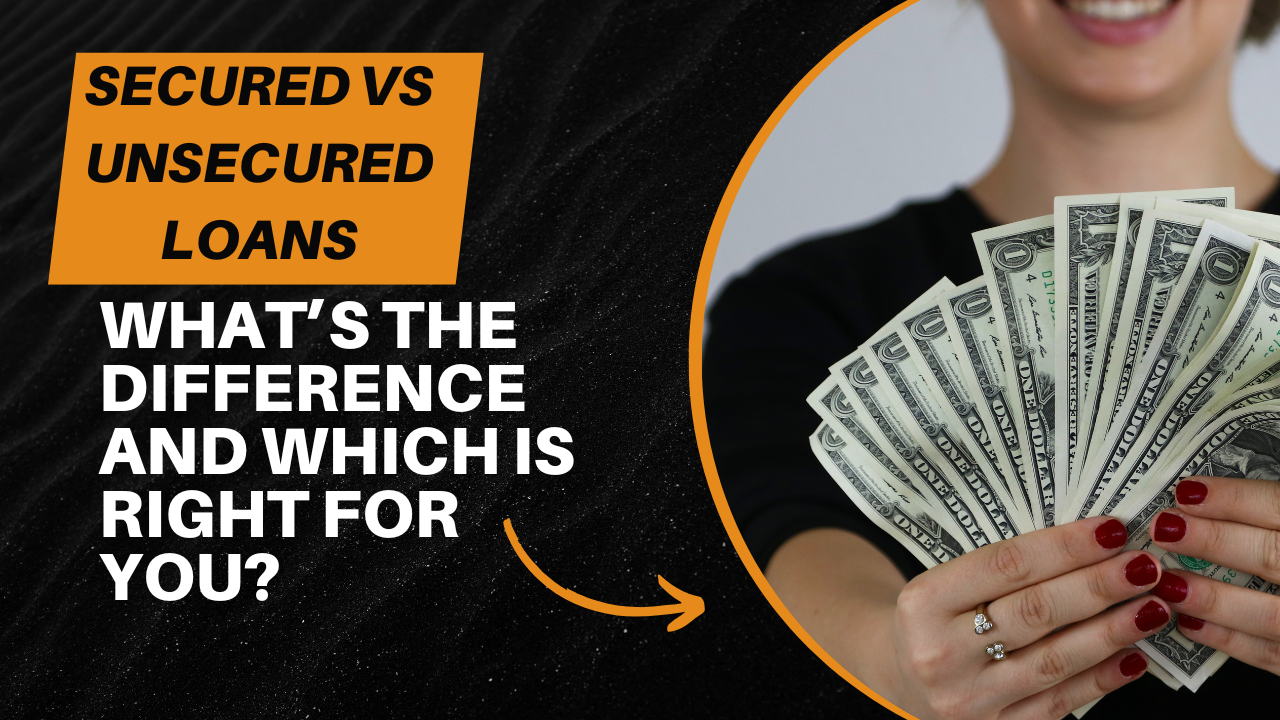When it comes to borrowing money in 2025, understanding the difference between secured vs. unsecured loans can help you make a smarter financial decision. Whether you’re financing a home renovation, consolidating debt, or covering an emergency expense, the type of loan you choose significantly impacts your interest rate, eligibility, and risk.
In this guide, we’ll break down the core differences, pros and cons, and best use cases for secured and unsecured loans—so you can borrow wisely and confidently.
What Is a Secured Loan?
A secured loan is backed by collateral—a tangible asset such as a car, home, or savings account. This means if you fail to repay the loan, the lender has the legal right to seize the asset to recover the debt.
Common Types of Secured Loans:
-
Mortgage (secured by your home)
-
Auto loan (secured by your vehicle)
-
Secured personal loan (backed by a savings account or certificate of deposit)
-
Title loan (uses your car title as collateral)
Key Characteristics:
-
Lower interest rates
-
Easier to qualify for with poor or limited credit
-
Risk of asset loss if you default
What Is an Unsecured Loan?
An unsecured loan does not require collateral. Lenders approve your application based on your creditworthiness, income, and debt-to-income ratio.
Common Types of Unsecured Loans:
-
Personal loans
-
Credit cards
-
Student loans (federal and some private)
-
Lines of credit
Key Characteristics:
-
No risk of losing personal property
-
Higher interest rates, especially with poor credit
-
Requires a good to excellent credit score for favorable terms
Secured vs. Unsecured Loans: Key Differences at a Glance
| Feature | Secured Loans | Unsecured Loans |
|---|---|---|
| Collateral Required | Yes | No |
| Interest Rates | Typically lower | Typically higher |
| Risk to Borrower | Loss of collateral if defaulted | Damage to credit score |
| Approval Chances | Higher with collateral | Lower with poor credit |
| Examples | Mortgage, auto loan | Personal loan, credit card |
Pros and Cons of Secured Loans
Pros:
-
Lower interest rates
-
Larger loan amounts
-
Easier approval for bad or limited credit
Cons:
-
Risk of asset repossession
-
May involve complex paperwork
-
Takes longer to process in some cases
Pros and Cons of Unsecured Loans
Pros:
-
No collateral required
-
Faster application and disbursement
-
Less risk of asset loss
Cons:
-
Higher interest rates, especially with poor credit
-
Lower borrowing limits
-
Stricter eligibility requirements
Which Loan Type Should You Choose in 2025?
Choose a Secured Loan If:
-
You own valuable collateral (car, home, savings)
-
You want a larger loan amount
-
You need lower interest rates
-
Your credit score is below average
Choose an Unsecured Loan If:
-
You have good to excellent credit
-
You need funds quickly
-
You don’t want to risk personal assets
-
Your borrowing needs are small to moderate
Impact on Credit Score
Both types of loans impact your credit, but in different ways:
-
Timely payments on secured or unsecured loans help build your score
-
Defaulting on a secured loan can lead to asset loss and credit damage
-
Defaulting on an unsecured loan won’t cost assets but will severely affect your credit history
Frequently Asked Questions (FAQs)
Q: Are secured loans safer than unsecured loans?
A: Secured loans are safer for lenders, not necessarily for borrowers. Borrowers risk losing their asset, while lenders are protected by collateral.
Q: Can I convert an unsecured loan into a secured one?
A: Not typically. However, some lenders may offer a refinancing option with collateral to lower your rate.
Q: Do secured loans always have lower rates?
A: Generally, yes. Because the lender has collateral, they can afford to offer better rates.
Final Thoughts: Making the Right Choice
Choosing between a secured vs. unsecured loan comes down to your financial goals, credit history, and risk tolerance. If you have strong credit and need quick funds, an unsecured loan may be ideal. On the other hand, if you’re looking for a larger loan and can offer collateral, a secured loan could save you thousands in interest.
Before borrowing:
-
Compare loan offers
-
Understand the terms and penalties
-
Use a loan calculator to plan repayment
-
Never borrow more than you can afford
